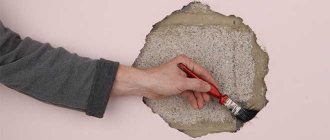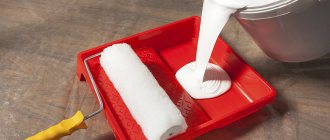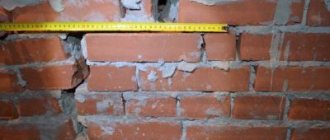Standing in front of a slammed door to the next room and not being able to open it is not what most citizens who are tired after a day of work dream of. Nevertheless, such situations happen and are not as rare as we would like. In order to unlock the ill-fated door, you need to have an idea of how to deal with a particular lock. And also understand what tools and methods may be useful.
Latch
The simplest mechanism, consisting of only two elements - the body and the tongue. Serves to prevent the door from spontaneously swinging open. It has a budget price. In addition to its affordable price, the device attracts:
- long service life;
- ease of recovery;
- reliability of the design;
- no need for a key;
- very rare breakdowns.
In this case, different types of latches can be used - latches, roller, magnetic, sliding or with a lock. The first type of locking mechanism is equipped with a tongue that is beveled on one or both sides. In the second case, the tongue is presented in the form of a rotating roller.
Magnetic ones hold the door using the system of the same name. And for sliding ones, the latch acts as a bolt. To open or close it, you need to pull the lever or rotate it around its axis. Locking mechanisms with a latch are similar to locks. The latch blocks the rotating or pressing mechanism.
Important ! If latches of this type are handled incorrectly, the latch may fail and the tongue may jam.
Lock with handle
According to their design features, door handles are divided into the following types:
- Push . They are distinguished by the greatest reliability and comfort. Unlocking is activated by pressing the handle down. After it returns to its original position, the lock is locked again.
- Knob handles . Here the ball-shaped handle turns to the right or left. Allows you to lock the door mechanism from the inside.
- Invoices . Pull handles are the simplest metal accessories for manipulating the door leaf. If executed successfully, they can advantageously complement the interior decoration of a room.
- For compartment type doors . If the trajectory of movement runs parallel to the wall, install overhead handles. Wooden models with a cassette built into the wall are equipped with devices without a protruding handle.
Handles for interior doors can have a base plate in the form of a rosette or a plate. A rosette is a part in the shape of a circle or square. Always compact and has regular outlines. Plate - an elongated element at least 10 cm long with straight or rounded corners. A much more reliable option for attaching a door handle than the previous one.
Reference ! Door handles are made from wood, glass and plastic. However, metal ones are the most popular. The color is selected depending on the shade of the canvas.
Complex systems
Products based on electronic technologies are the most advanced.
At the same time, smartlocks are complex in design and expensive devices. Such locking mechanisms consist of two parts: mechanical and digital. Depending on the type of installation, there are 2 types of electronic locks - mortise and external. The action algorithm is as follows :
- Encode the opening and closing of the door by entering a certain numerical combination into the device memory.
- Dial the code numbers on the front smart panel, then unlock and then lock the entrance.
- Configure the use of a special key to provide increased security.
Such systems are installed only in places where it is necessary to maintain a high level of secrecy. The feasibility of installing such a device in a private house or apartment is practically zero.
Attention ! The most expensive designs involve the use of a special magnetic card. It is almost impossible to falsify it.
Video description
5 Ways to Open a Door Without a Key.
Complex systems
To dismantle the cylinder mechanism, you need to unscrew the end plate, then remove the front part. Next, you need to push the lock with a screwdriver so that you can subsequently grab it with your hands and carefully pull it out.
Removing the lever mechanism is much easier. It will be enough to unscrew the plate, move the internal device to the edge, and carefully remove it.
Experts recommend taking photographs of each stage of work so as not to forget the location of parts during assembly Source zamochniki.com.ua
Tools for opening an interior door
Depending on the design of the lock, a variety of devices may be useful to open the locking mechanism.
Most of them are found in almost every home: a paper clip, a knitting needle or hook, a hairpin, a pin, a large sheet of paper. Sometimes you can’t do without a kitchen knife or nail file, stiff wire, a simple pencil, a magnet and even a bank card. If light artillery does not help, heavy guns will enter :
- mounting and pliers;
- punch, chisel, hammer;
- nail puller or wire cutters;
- adjustable wrench, screwdrivers.
There are cases when interior doors are made of particularly durable material. Sometimes an autopsy needs to be performed on an emergency basis. Then a gas cutter, sledgehammer, grinder or drill is at the service of a home-grown burglar. Which tools to give preference in each individual case is up to the owner to decide.
Important ! When it is possible to use special master keys, this can save a lot of time, and most importantly, money on buying a new door.
Opening methods
How exactly the procedure will be performed depends on many important factors - the type of lock, the nature of the problem that has arisen, the location of the person at the time the door is blocked and the amount of time available.
If there is an emergency or there is a child on the other side of the door, no one will think about how to get inside. The choice will be made in favor of the fastest technology. In this case, it does not matter how destructive it will be for the product itself.
Warnings
- If you open the lock correctly, it will not be damaged, but if the cylinder tension is too strong or too much pressure is applied to the pins, there is a risk of damage to the lock mechanism.
- If the pin doesn't budge when you press down on it with a pick, you may be over-tensioning the cylinder and causing the holes in it and the body to move apart. Try loosening the cylinder tension. There is a risk that the replaced pins will fall into the cylinder. Unfortunately there is no other way out. Try changing the order of the pins you are working with the next time you try.
- There are many different laws regarding picking locks, owning master keys, and using improvised tools. In Russia, master keys (devices that allow you to open a lock without physically destroying it) are regarded as technical means intended for secretly obtaining information, the production, acquisition and sale of which is subject to licensing. Illegal trafficking (i.e. manufacturing, purchasing or selling without a license) of such products is a criminal offense punishable by up to 4 years in prison. Well, besides this, it’s not worth mentioning that only pick your own locks!
Latch offset
One of the most effective and simplest ways.
If there is no locking mechanism in the door, it is enough to slightly press the door. To do this, a flat and hard tool is first inserted into the gap between the canvas and the box. The thickness of the device is selected taking into account the width of the gap. Then slide the latch and pull the door towards you. This method is also suitable when the child locks himself in the bathroom and falls asleep. By swinging the door leaf from side to side, you can move the lock and enter the room.
- Without a key in the keyhole . The locking mechanism in an interior door is more a nominal value than a functional one. Therefore, you can cope with the task easily and without special skills. You should choose to use a knitting needle, a crochet hook or a plastic card. Place one of these items between the loot and the lock tongue and, using maximum effort, try to drown the latter into the array. After this, press the handle and free the opening from the obstacle.
- With the key in the keyhole. If the lock has a more complex design, and the key remains in the cylinder on the opposite side of the passage, you will have to resort to another method:
- Take a sheet of paper or newspaper, as well as an awl.
Place the paper so that you can later pull the corner.
- Use an awl to push the key out of the cylinder and remove the paper or newspaper.
A paperclip is another tool that can be used to achieve the same result. First, you should bend the device, stick it into the keyhole and move it up and down. Repeat the steps until you can catch the moving mechanism. After completing the preliminary stage, apply force, unlock the lock and enter the closed room.
Damaged latch
Essentially, the latch is damaged every time the lock is used. This component has the property of sticking, that is, it may not scroll all the way. You can also notice that with full pressure on the handle, the tongue is not completely hidden in the door leaf. Therefore, if it is slammed tightly, it may no longer open. But how to open a lock without a key on an interior door in such a situation?
- Using a wide screwdriver or other tool, you can carefully press the door leaf itself away from its frame and lift it slightly.
- In order to prevent such moments from arising again, you can disassemble the handle and observe the actions of the tongue.
- If the old design in the handle is faulty, then it would be wise to replace it with a modern one.
Interior door with lock
In some cases, additional locking mechanisms are installed on the door. They can be disk, cylinder, lever, etc. For each there is a key with notches, which is responsible for the process of unlocking and locking. If the key is lost or simply unavailable, the following actions should be taken:
- Pull the door . Sometimes forward movements allow the locking mechanism to open.
- Find a similar key . Some larvae are suitable not only for the keys included in the kit.
- Use a master key . The method is effective, but not everyone knows it.
- Get rid of a broken lock . The failed mechanism is removed in any way convenient for the master.
It’s better to start with the most gentle one. One that will cause the least damage to the door and lock. Otherwise, buying a new blade and locking mechanism every time will cost a pretty penny.
Latch
The most popular device that is installed on the door to the toilet or bedroom is the latch. Such models are more modern, and therefore are made inside a rotary handle located towards the room. There is a plug on the opposite side. But if this is a residential premises, then you can replace it with a lock with a key. Turning the tab on such a latch is not so easy. But we still need to find some ways to do this. How to open a slammed interior door without a key? One way is to use thin aluminum wire. To do this, you need to give it an arched shape and push it into the gap. After this, secure it so that its central part is behind the tongue. And, grasping both ends, smoothly but confidently pull towards yourself. If everything is done correctly, the tongue should return to its position. Next, holding the handle in the down position, try to open the door.
Through the lock cylinder
There are several options for penetration using the lock cylinder. Depends on the degree of intervention in the mechanism and the ability to protect property from significant damage:
- Gentle . Here it is enough to use a paper clip, hairpin or wire.
- Moderate weight . Now is the time to use a master key or similar device.
- Destructive . Here they use a screwdriver, drill, hammer and remove the larva completely, opening access to the locked room.
Caution is the first thing that is necessary when choosing one method or another. After some damage, it will no longer be possible to repair the door.
Radical methods
When all methods that involve careful treatment have been exhausted, but the result still cannot be achieved, only one thing remains. Resort to extreme measures. The saddest thing is that using any of them means subsequently the need for repair work.
- Cutting the latch and bolts . If there is sufficient distance between the canvas and the box, there is a chance to get by with little damage - cut off the sunken tongue or bolts. With good skill and the use of an angle grinder, you can limit yourself to minor damage to the paint layer. The main thing is that the door leaf will remain intact.
- Removing door hinges . In the event that a person is locked inside a room and there are simple card hinges on the door, you can dismantle the door. Non-removable fittings, as a rule, protrude beyond the boundaries of the door block. It is carefully cut with a grinder. Replacing the hinges is not too noticeable damage. Hidden fittings cannot be cut down or disassembled. To open the interior door you will have to manipulate the lock.
- How to knock down an interior door ? You should start with a preliminary study of the object of vandalism. It should open in the direction opposite to the force. Now we need to find the weakest point. It is usually located next to the locking mechanism. Now deliver a crushing blow so that you end up with a free opening, and not a broken limb. If you have a weighty object, it is better to use a device.
Opening options
The method that should be used to solve this situation directly depends on the locking hardware used in the door structure. You can try to open different locks in different ways. Some complex mechanisms should not be tackled; it is better to immediately call a specialist, and he will open the interior doors using a special tool. But most often, simple door components are installed on the interior panels.
Remove from hinges
A fairly common and easiest way to open an interior door system is to remove the door leaf from the hinges. This option is only possible if you are inside the room, when this fittings are in the access zone. If there is sufficient distance between the leaf and the frame, the door can be easily removed.
For internal systems, simple card loops are most often used, which are sometimes equipped with removable decorative plugs. By unscrewing this element, you can pull out the pin, and the door is simply removed from the opening.
Key lock
When the locking mechanism is additionally equipped with a cylinder for locking with a key, then in this version you can open the interior door lock in the following ways:
- Sometimes you can get rid of a slammed door by pulling the door handle hard several times. In a simple and loose mechanism, the bolt can bounce off on its own with a little physical force.
- You can try to open the lock with a similar key. Some locking mechanisms operate from several similar keys, and not just from those included in the kit.
- Sometimes the lock is turned by a paper clip, a knitting needle, a nail file, or various other thin objects. An improvised master key is inserted into the cylinder and turned, trying to move the levers or pins away. The process requires some skill and accuracy.
- If all else fails, then you can use one of the relatively harmless options and try to remove the lock. Using a screwdriver (file, ruler, knife, etc.), unscrew all visible screws, then remove the handles and decorative trims. Having gained access to the locking mechanism, you need to try to turn it. The cylinder may have to be drilled out.
Using brute force
If none of the above methods succeeded in opening the lock, then brute force is applied to the slammed door. Breaking into an interior door is carried out using the following force methods:
- You can cut off the hinges along the plate or hinge axis so as not to damage the blade itself and the locking mechanism. This is not possible with hidden fittings.
- If the lock latch is clearly visible in the gap between the door leaf itself and the frame, then it is cut off using a hacksaw. You can use a grinder, but you will have to take measures to protect the door from sparks.
- In the most extreme case, the door leaf is knocked out of the frame. This is acceptable for structures that do not have high strength or in the absence of the necessary devices, as well as if it is necessary to urgently open the door to prevent other more severe consequences.
- The blade can be pressed away from the jamb using a chisel, large screwdriver or pry bar. The tool is inserted into the gap between the door frame and the door in the area where the latch tab is located, then you need to try to force it back to the desired open position or remove it from the hole in the strike plate.
- Drilling a hole in the locking mechanism cylinder will keep the entire door unit intact, but will require replacing the lock. The narthex mechanism is grasped with a thin tool through the hole made, and the crossbars are returned back to the locking device.
After using these methods, you will most likely have to change the fittings, restore the door jamb or door leaf. Sometimes it may be necessary to completely replace the entire door along with the frame, so brute force is used as a last resort.
Latch on interior door
Situations quite often occur when the spring in the latch breaks, and the locking tongue does not move when you press the door handle. You can open a closed door by moving the latch. You will need a thin screwdriver, scissors, a knife, a metal ruler, a plastic card, a file or any other thin and durable device. You need to place the tool in the gap between the door jamb and the leaf at the location of the locking mechanism and, carefully pressing the tool on the tongue, push it towards the lock and remove it from the strike plate.
This method can be used if the side of the locking device where the tongue has a bevel is accessible, otherwise it is difficult to fix the tool, because it will slip. A straight latch that does not have a cut can be moved by placing the tool on top. In this case, you need to try to hold the tool at an angle in order to reach the beveled inner side of the tongue. Then press and push the latch while turning the door handle.
Other lock mechanisms
Quite often, key locking devices are used for doors between rooms, which are locked by simply pressing a button. Such a lock can close on its own if the door is slammed hard. A good quality product is equipped with insurance to help cope with such an unpleasant situation. For this purpose, a special hole is provided at the bottom of the outer part of the handle. If you insert a thin device (an awl, a nail, a knitting needle, etc.) into it and then press lightly, the safety mechanism is triggered and the door lock opens.
Some locking structures are additionally equipped with locking handles that prevent the door from opening from the outside. Such mechanisms are often used in toilets and bathrooms. If the lock is jammed, sometimes it is possible to open the door by turning the handle several times in different directions.
Related article: How to remove a door from card hinges
If these manipulations are unsuccessful, you will have to open the locking device. To gain access to the locked mechanism, you need to remove the decorative trim. It is removed by first unscrewing the screws using a screwdriver, ruler, knife, nail file or any similar object, then the lock is unlocked by pressing the locking device and simultaneously turning the handle.
Step-by-step instructions on how to open a door without a lock
Often the door jams due to a broken handle. There is nothing difficult in eliminating the problem. To do this you need:
- Try to disassemble the handle using a flat, thin tool. A screwdriver, penknife, manicure file or any other similar object will do.
- Unscrew the screws and cogs. Feel for the locking mechanism. Turn it around.
- Open the front door and enter the room.
If the handle is equipped with a special key, then a thin, sharp device in the form of a nail, knitting needle or hairpin will come in handy. Pressing all the way, push the key out and the lock will open.
The tongue has become unusable
There are also cases where the door is locked with a key, and when you try to open it again, the lock does not turn. This can often happen with any handle that does not have an additional latch. Even when turning the key smoothly, the lock does not open. If this happens, then the problem is in the tongue itself.
How to open an interior door without a key in this case?
- Carefully place a bank card, ruler, stationery knife or any other object that will fit into this opening into the gap between the door and the frame. The door handle will serve as a guide.
- After this, the object being used needs to be slightly tilted and pressed. It is necessary to tilt it so that the far part of the object touches the inclined surface of the tongue.
- You need to apply pressure so that whatever means you are using can help the tongue go back into the lock. When such an action is performed, the handle itself must be tilted down, and the sash must be tensioned as the door opens.
If you know all these simple rules, then you will no longer have questions like: “How to open an interior door without a key?”
Measures to prevent such a situation
Difficulties with difficulty opening an interior door are easier to prevent than to attempt to eliminate the breakdown over a long period of time. What to do if you don’t want to learn the art of hacking at home? You must follow these simple rules:
- Carry out regular maintenance of locking mechanisms.
- Purchase locks with emergency opening capabilities.
- When installing, leave a gap between the door leaf and the jamb.
- Keep a spare set of keys within reach.
- Replace faulty locks in a timely manner.
By following simple recommendations, you can avoid unpleasant moments with locked rooms, jammed locks and unplanned expenses for purchasing new doors. It would also be useful to protect your nerve cells and protect yourself from shocks. After all, 90% of inner peace and peace in one’s home depends on the success of the owner’s actions.
Useful expert advice
Door repair and maintenance experts often share simple tips with the public on how to avoid serious structural damage followed by costly repairs:
- If you always take with you a simple universal master key for any type of lock, one day it can come in very handy. You can purchase such a tool at any construction or household retail outlet for nominal money.
The simplest master key for a lock
- In each apartment building there is a management company that is responsible for the maintenance of public premises and provides all possible household assistance to residents in the event of emergencies.
In such organizations, most often, during the daytime, there is a master, locksmith or plumber who can be contacted for the service of opening the door without a key. Such specialists have the necessary set of tools and skills to act promptly in such situations.
Professional door opening
- For people who are prone to forgetfulness, experts recommend installing smartlocks. Such locks can be easily opened by scanning a fingerprint, typing a code, or reading the retina. Such devices do not require keys, and all maintenance and care of the equipment consists of timely replacement of batteries.
Smartlock with code access
By following these simple recommendations, the apartment owner can save money and time. Even if an emergency situation has not occurred for many years, no one is immune from its sudden occurrence.











